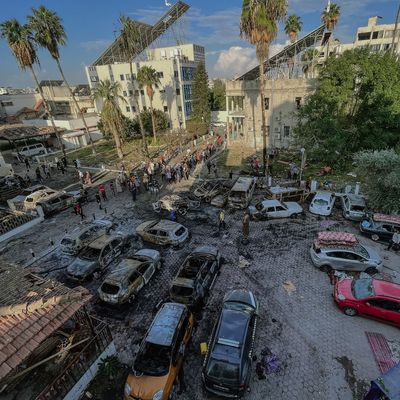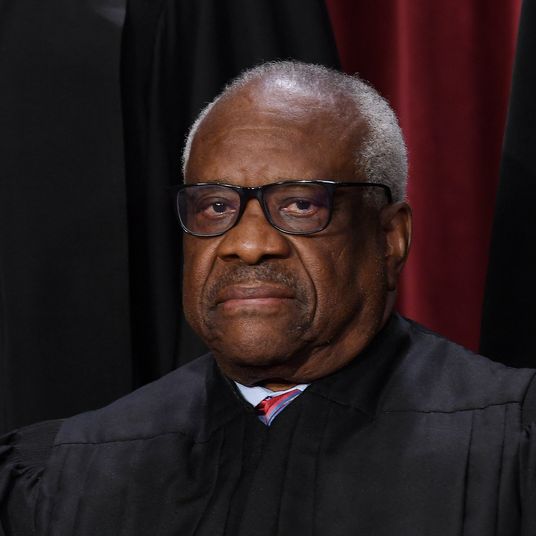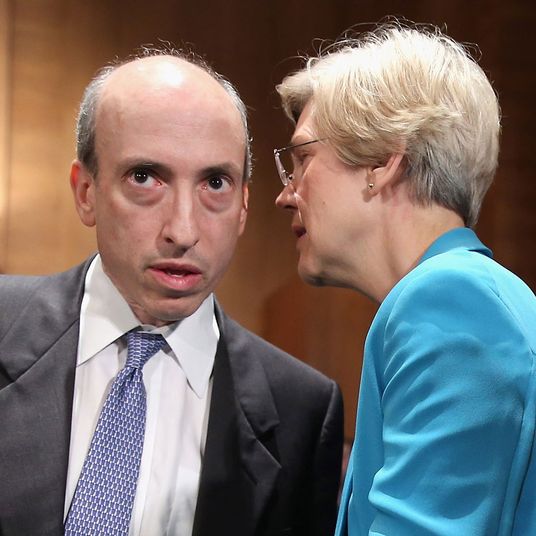
At 6:59 p.m. on the night of October 17, a fiery explosion erupted just outside al-Ahli Arab Hospital in Gaza City, where as many as a thousand displaced Palestinian civilians had sought refuge from the daily retaliatory air strikes Israel has conducted in Gaza since Hamas’s October 7 attack. Almost immediately after the blast, Hamas claimed that the hospital had been hit by an Israeli air strike, killing hundreds of people, but Israel soon denied any responsibility, claiming that the explosion was the result of a misfired rocket launched toward Israel by militants in Gaza.
While the U.S. soon backed Israel’s explanation, a number of Arab countries joined Hamas in blaming the blast on an Israeli air strike, and the incident quickly triggered anti-Israel and pro-Palestine protests throughout the Middle East and North Africa and prompted the cancellation of a planned summit between President Biden and Arab leaders the following day. In the week since the blast, governments, NGOs, weapons experts, members of the OSINT community, and multiple news organizations have analyzed the evidence in an attempt to determine what really happened. Below, a look at their conclusions and the remaining questions.
A misfired militant rocket remains the most likely cause
The broad consensus, thus far, from most independent analyses of videos and images of the explosion, aftermath, and blast site as well as witness accounts is that the explosion was caused by an errant rocket fired from inside Gaza that struck the parking lot outside the hospital. This is not a definitive conclusion but remains the most likely explanation at this time based on available evidence, according to investigations by the Associated Press, CNN, The Economist, The Guardian, and The Wall Street Journal.
A few other investigations have offered alternative explanations. Six experts offered a fairly wide range of possibilities to the BBC last week. And organizations critical of Israel have also weighed in. The OSINT group Forensic Architecture has suggested the munition originated from the direction of Israel and may have been an Israeli artillery shell. And an analysis by Al Jazeera concluded that Israel’s Iron Dome missile-defense system may have shot down the rocket. Both analyses have faced substantive criticism from other investigators and experts, but virtually all investigators have acknowledged the difficulty in making firm conclusions without more evidence.
Since hours after the blast, Israel has claimed the explosion was caused by a misfired militant rocket, ultimately highlighting — as others subsequently have — the lack of a large crater at the site consistent with those created by other Israeli air strikes. It also said it was not conducting air strikes in the vicinity of the hospital at the time of the explosion and claimed to have intercepted communications between militants confirming it was not an Israeli strike. It released an audio recording of said conversation, but it’s not really clear if the conversation actually backs Israel’s case.
The U.S. later said that it had also concluded, preliminarily, that a militant rocket had caused the blast, citing signals intelligence and infrared data detected by satellites.
How many people were killed?
Soon after the blast, the Hamas-run Palestinian health ministry claimed that at least 500 people were killed, then 833. On Wednesday, it revised that death toll to 471, but that number has not been — and most likely cannot be — independently verified. Hamas has repeatedly exaggerated death tolls in the past, and so far no NGOs operating in Gaza have offered their own estimates as to how many people were killed in the hospital blast.
Videos of the immediate aftermath of the blast showed more than a dozen motionless bodies in the courtyard near the hospital. The head of Gaza City’s Shifa Hospital, where victims of the nearby blast were brought, said in an interview hours after the explosion that the hospital had received the bodies of 150 to 200 people killed by the explosion as well as about 300 people injured by the blast.
U.S. intelligence agencies reportedly estimated last week that between 100 to 300 people were killed in the blast, but they did not detail the evidence that assessment was based on and said it was only a preliminary estimate.
The hospital
Al-Ahli is a roughly 80-bed hospital in Gaza City operated by the Anglican Church. Like other hospitals in Gaza, civilians had gathered at al-Ahli seeking refuge from ongoing Israeli air strikes. At the time of the explosion, as many as 1,000 Palestinians had taken shelter just outside the facility, and about 600 people were inside the hospital, according to an Anglican Church official. Four hospital staff members were injured by the explosion, but no one was killed inside the hospital, the church said.
Images of the blast site taken the day after the explosion show multiple burned-out vehicles in an adjacent parking lot, what appears to be a small shallow crater in the same parking lot, as well as superficial damage to the hospital itself and surrounding buildings, which all remained structurally intact.
Hamas has not backed up its claims with evidence — and claims there’s nothing left of munition
The New York Times reports that Hamas “has yet to produce or describe any evidence linking Israel to the strike, says it cannot find the munition that hit the site and has declined to provide detail to support its count of the casualties.”
A senior Hamas official claimed to the Times that the munition — which is critical evidence for confirming what caused the blast — had disintegrated, so there was nothing left to analyze. “The missile has dissolved like salt in the water,” he said.
That isn’t likely, however:
A barrage of rockets preceded the blast
According to an Associated Press analysis of multiple videos taken of the skyline from a variety of angles, at least 17 rockets were launched from inside Gaza right before the explosion. Within minutes of the explosion at the hospital, both Hamas’s Qassam Brigades military wing and the Palestinian Islamic Jihad militant group in Gaza announced that they had launched rocket strikes against Israeli targets.
Both Israel and the U.S. say that their intelligence suggests the rocket that struck the hospital was fired by the Palestinian Islamic Jihad group (which has denied it was responsible).
Was Israel’s Iron Dome involved?
One theory that has been put forward in the aftermath of the explosion is that the rocket that broke up in the sky over Gaza City seconds before the explosion at the hospital had been intercepted by a missile fired by Israel’s Iron Dome air-defense system. A video analysis by Al Jazeera’s Sanad Agency concluded that the mid-flight explosion was “consistent with Israel’s Iron Dome missile-defense system intercepting a missile fired from the Gaza Strip and destroying it in midair.” Other experts say that there is no visual evidence in the available video footage to back up that theory. And the Israel Defense Forces has said that the Iron Dome system does not target rockets in Gazan airspace, only after they enter Israeli airspace. One arms expert told the Associated Press that it was unlikely Iron Dome played a role in the blast:
John Erath, the senior policy director at the Center for Arms Control and an expert on missile defense, said that while it might be technically possible for Iron Dome to intercept a missile over Gaza, it would be unlikely in this case because the projectile was very early in its flight path — still on the way up — and the system is designed to only intercept projectiles it determines are on a flight path to a populated part of Israel.






























